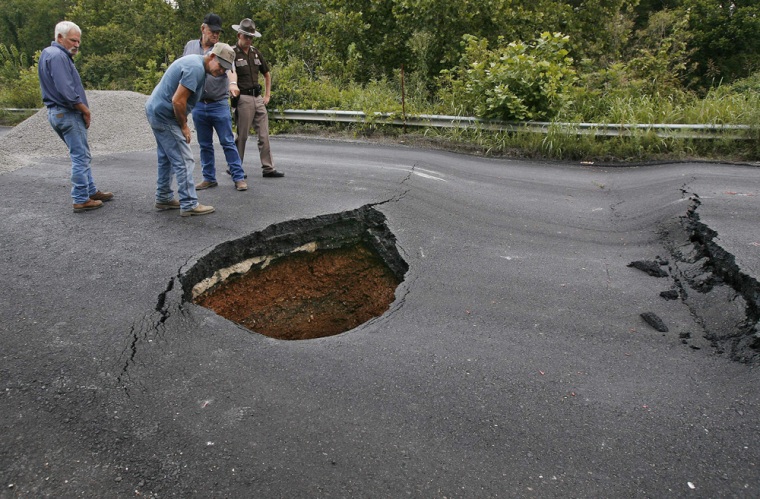Floodwater slowly subsided in parts of Oklahoma and Kansas on Thursday, while in Texas, officials were bracing for another 1 to 3 inches of rain and even more damage.
An estimated 1,000 homes in Texas have already been severely damaged or destroyed by the widespread flooding since late May. The slightest additional rainfall could cause flash flooding where rivers, lakes and reservoirs are already full to the brim.
“Unprecedented,” said Jack Colley, chief of the Texas Division of Emergency Management. “Mostly this time of year we’re fighting wildfires.... The problem with this is, the water won’t go away.”
Colley said the state’s major river basins are at flood stage, the first time that’s happened since 1957.
The affected area covers 49 counties and 48,000 square miles from North Texas to the Rio Grande Valley, a section roughly the size of the state of Mississippi. Thirteen deaths have been blamed on the weather over the past 2½ weeks in the state, Gov. Rick Perry’s office said.
In Missouri, the body of a 16-year-old girl was also found Wednesday night in a submerged SUV after she apparently tried to cross a flooded creek.
So far, the heaviest flood damage has been in Miami, Okla., where the Neosho River crested at about 29 feet, its highest stage since 1951. The river was not expected to be back within its banks until late Sunday.
About 600 homes and businesses were believed damaged, City Manager Mike Spurgeon said.
“We’re starting to see an average drop of about a half-inch every hour,” he said Thursday with some relief, though he estimated it could take six months to a year to rebuild in the parts of town most heavily damaged.
'I lost everything'
Displaced residents watched and waited, anxious to begin salvaging soggy belongings. Dorena Jackson walked near her neighborhood, trying to get a glimpse of the home that she waded out of two days ago.
“I don’t even have a change of clothes,” Jackson said. “I lost everything as far as I know.”
Concerns also eased Thursday that a full Lake Texoma along the Oklahoma-Texas line would send floodwaters into the Red River.
Ross Adkins, a spokesman for the U.S. Army Corps of Engineers, said water could spill over the Denison Dam, but no major damage to homes was anticipated. The last major flood was nearly 5 feet over the spillway in 1990. This year’s level is expected to crest at 1 foot over the spillway.

Still, residents, particularly those living in farm areas near the river, were warned to take precautions.
“(We’re) warning residents along the Red River to move all livestock, equipment and other necessary belongings to higher ground,” Bryan County Emergency Management Director James Dalton said. “We are also urging residents to have an initial evacuation plan, should conditions threaten homes in the area.”
Hard-hit areas
Thursday, the National Weather Service forecast a return to drier conditions in northeastern Oklahoma over the next 10 days, with an occasional isolated rain shower.
As floodwaters receded in hard-hit southeastern Kansas Thursday, emergency personnel worked to get several semitrailer loads of bottled water into flooded communities where water treatments plants were down because of high water or power loss.
South-central Kansas was hit hard with overnight torrential rains, especially in Sumner County, where some areas got as much as three inches in just a few hours.
The Verdigris River in Kansas peaked at more than 52 feet on July 1 — about 22 feet above flood stage — and by Thursday had fallen to under 37 feet, said Jim Putnam, a hydrologist with the U.S. Geological Survey.
In northeastern Oklahoma, the Caney River began slowly falling after cresting at 34.18 feet, according to the National Weather Service. The river, which forced hundreds of residents near Bartlesville from their homes this week, wasn’t expected to fall below flood stage until Sunday night, the weather service said.
